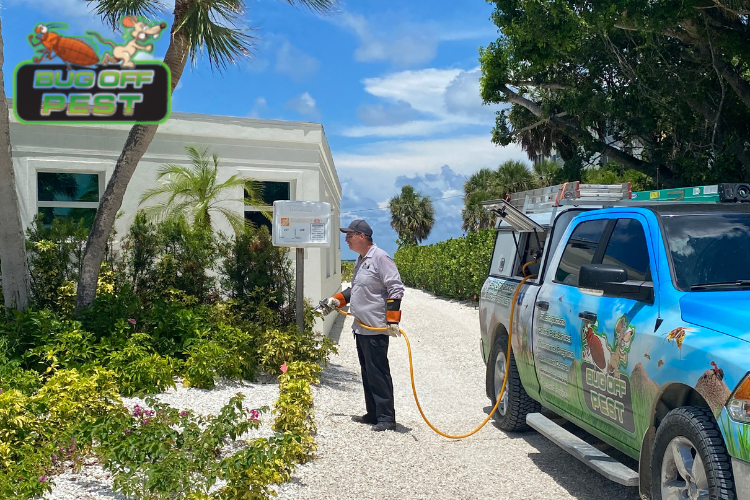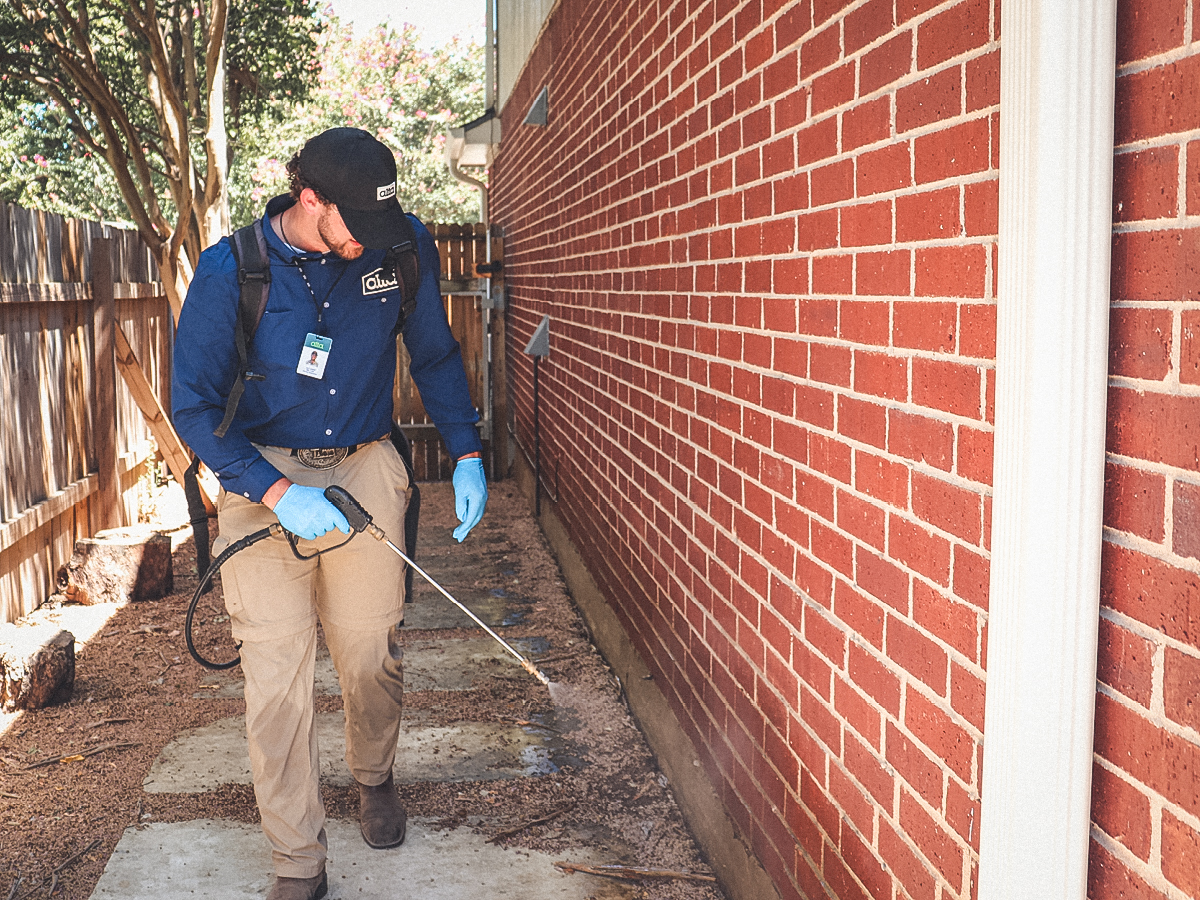Learn Regarding the most up to date Breakthroughs in Bug Control and Just How to Apply Efficient Treatment Solutions
In recent times, the field of bug control has actually witnessed substantial developments, driven by the need for lasting and reliable therapy remedies. Innovative methods such as Integrated Pest Administration (IPM) combine green exercise with advanced modern technology, improving both efficacy and ecological duty. Moreover, the combination of smart technologies and do it yourself techniques has actually empowered individuals to tackle pest issues better. As we discover these growths, it comes to be important to comprehend how best to implement these methods in numerous setups to accomplish ideal results. The effects for insect administration techniques can be transformative.
Eco-Friendly Parasite Control Options
Over the last few years, the demand for environmentally friendly bug control alternatives has actually risen as property owners and services alike look for lasting choices to standard chemical treatments. This change is driven by growing environmental understanding and a need to reduce the health and wellness dangers connected with synthetic pesticides.

Environmentally friendly insect control approaches encompass a series of methods that prioritize the usage of natural compounds and techniques. Integrated Insect Management (IPM) is one such method, incorporating biological, cultural, and mechanical techniques to handle insect populations while minimizing dependence on chemicals (Wildlife removal services). This holistic technique highlights avoidance via environment adjustment and the introduction of all-natural predators, thereby fostering a balanced environment
An additional preferred choice is using herb pesticides originated from plants, which have a tendency to be much less harmful to non-target microorganisms. Products like neem oil and diatomaceous earth have actually obtained traction for their efficiency in regulating insects while posturing minimal dangers to human wellness and the environment.
Furthermore, exemption techniques, such as securing access points and keeping tidiness, play a vital role in environment-friendly pest monitoring. By embracing these sustainable techniques, services and individuals can successfully take care of pests while promoting a healthier world for future generations.
Smart Modern Technology in Parasite Management
Development is reshaping the landscape of bug monitoring, with clever modern technology emerging as an essential force in improving effectiveness and efficiency - Wildlife removal services. The combination of Web of Things (IoT) devices, synthetic intelligence (AI), and data analytics is transforming exactly how insect control experts approach invasions
Smart traps outfitted with sensing units can detect pest activity in real-time, sending immediate alerts to drivers. This enables prompt actions, decreasing damage and lowering the need for comprehensive treatments. In addition, AI formulas assess historical information to anticipate bug actions, enabling positive interventions based on ecological problems and infestation patterns.
Drones and automated cars are likewise playing a substantial function in bug management, offering aerial assessments of large locations, recognizing hotspots, and also dispersing targeted therapies. These technologies not only simplify operations but also boost safety and security by limiting human exposure to potentially harmful chemicals.
Furthermore, mobile applications encourage customers to keep an eye on insect task and access specialist guidance, cultivating a collective strategy to pest administration. On the whole, the adoption of wise technology is setting a brand-new standard in pest control, stressing data-driven decisions and lasting techniques that ultimately profit both property owners and specialists alike.
Integrated Insect Administration Strategies
Integrated Insect Administration (IPM) uses a holistic technique to pest control, incorporating various methods to efficiently take care of parasite populations while decreasing risks to human wellness and the environment. IPM focuses on understanding the pest life cycle, their all-natural opponents, and the ecosystem in which they prosper.
One of the essential parts of IPM is keeping an eye on pest populaces via routine assessments and data collection. This enables for the recognition of pest thresholds, figuring out when treatment is necessary. Cultural methods, such as plant turning, sanitation, and habitat manipulation, are essential in lowering insect occurrence and advertising plant health.
Mechanical controls, consisting of catches and obstacles, are additionally essential in IPM. These methods can physically eliminate or prevent bugs without the use of chemicals. When needed, the wise application of chemical controls is employed, concentrating on targeted therapies that minimize environmental impact.
Education and collaboration among stakeholders, including farmers, parasite check here control specialists, and the neighborhood, are vital for the successful execution of IPM strategies. By focusing on sustainable techniques, IPM not only addresses pest issues yet additionally promotes a healthier ecosystem.
Biological Control Approaches
Various biological control approaches are progressively recognized for their performance in handling pest populaces while promoting eco-friendly balance. These approaches harness natural killers, parasites, and pathogens to reduce pest numbers without counting on artificial chemicals. For instance, the intro of ladybugs can successfully control aphid populaces, while nematodes target soil-dwelling bug larvae.
Furthermore, making use of microbial pesticides, such as Bacillus thuringiensis (Bt), gives an eco-friendly option for handling caterpillar parasites. These items particularly target pest types, reducing harm to useful insects and pollinators. In addition, preservation biological control emphasizes enhancing environments for all-natural enemies, such as birds and beneficial bugs, thereby motivating their visibility in farming systems.
Research study continues to reveal cutting-edge techniques within this field, such as making use of scents to interrupt pest breeding patterns or the growth of biocontrol representatives with genetic modification. Carrying out these approaches can bring about sustainable insect management methods that reduce the reliance on chemical interventions, inevitably fostering healthier ecosystems. As recognition of these techniques grows, they are coming to be integral parts of integrated bug administration (IPM) methods, using a balance between effective pest control and environmental stewardship.
DIY Pest Control Solutions
As property owners seek reliable methods to deal with insect issues, do it yourself bug control options have obtained appeal for their availability and cost-effectiveness. These techniques empower people to attend to invasions using conveniently termite pest available materials and strategies, usually without the demand for expert intervention.

In addition, preserving appropriate sanitation and normal examinations can protect against bug entry and nesting (Wildlife removal services). Simple techniques, such as securing fractures, removing food sources, and decluttering, can dramatically decrease pest populaces. Traps, both homemade and commercially readily available, can likewise offer reliable options for tracking and controlling specific parasites like rats or bugs

Conclusion
The assimilation of eco-friendly parasite control alternatives, wise technology, and innovative management approaches offers a thorough approach to reliable parasite management. By welcoming Integrated Parasite Management (IPM) and making use of biological control approaches, together with DIY remedies, accountable and lasting bug control can be achieved. These advancements not just enhance the performance of bug management techniques yet likewise add to a healthier setting. Applying these methods promotes a balanced ecological community while properly attending to pest populations.
Environment-friendly parasite control approaches encompass a range of techniques that prioritize the usage of all-natural materials and techniques. Integrated Pest Management (IPM) is one such method, incorporating organic, cultural, and mechanical techniques to manage bug populations while minimizing reliance on chemicals. As understanding of these strategies expands, they are ending up being indispensable parts of incorporated parasite monitoring (IPM) approaches, offering an equilibrium in between reliable pest control and ecological stewardship.
The integration of environment-friendly bug control alternatives, smart innovation, and cutting-edge monitoring strategies presents a detailed strategy to reliable pest management. By accepting Integrated Parasite Management (IPM) and using organic control methods, alongside DIY remedies, responsible and sustainable pest control can be accomplished.